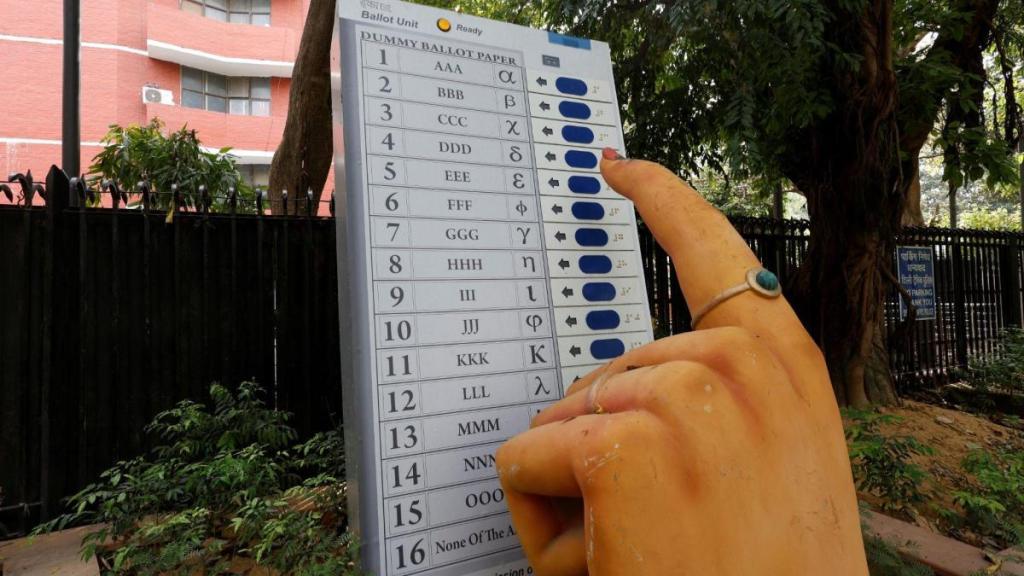The Centre tabled the ambitious One Nation, One Election Bills in Parliament today (December 17). The Bill seeks to synchronise Lok Sabha, state assembly and local body elections across India. Proposed by a committee led by former President Ram Nath Kovind, this bold reform requires 18 legislative changes, including 15 constitutional amendments. While the ruling BJP hails it as a cost-effective and time-saving measure, opposition parties argue it is impractical and unnecessary.
Understanding One Nation, One Election
The One Nation, One Election (ONOE) proposal envisions holding all elections—Lok Sabha, state assemblies, and local bodies—within the same year, if not simultaneously. The plan proposes a two-phase approach: the first phase would cover Lok Sabha and state assembly elections, followed by local body polls within 100 days.
At its core, the idea aims to streamline India’s electoral process, reduce costs and curb frequent disruptions caused by staggered elections. However, the concept faces daunting logistical, constitutional and practical challenges.
Notably, this is not a new concept in India’s electoral history. Simultaneous elections were successfully conducted during the first few general elections. In 1957, polls for the Lok Sabha and state assemblies occurred together across seven states—Bihar, Bombay, Madras, Mysore, Punjab, Uttar Pradesh, and West Bengal—due to coordinated efforts by central and state governments and the Election Commission of India (ECI).
However, this system began to unravel after the 1967 elections due to political instability, frequent dismissals of state governments under constitutional provisions, and coalition collapses at both state and national levels. As a result, India adopted staggered elections, which have now become the norm.
What is the Centre’s argument for ONOE?
Union Law Minister Arjun Ram Meghwal had earlier outlined the government’s reasoning behind the One Nation, One Election bills. Cost efficiency is a primary argument, as conducting elections in phases places a massive financial burden on the exchequer. A unified election would significantly reduce expenses related to the repeated deployment of polling officials, security forces, and campaign resources. Additionally, policy continuity is disrupted by the frequent imposition of the Model Code of Conduct (MCC), which stalls welfare schemes and development programs, leading to policy paralysis.
Meghwal also highlighted that ONOE could improve voter turnout by reducing voter fatigue caused by constant elections. From an economic perspective, frequent elections create instability, deterring investments, disrupting business activities, and stalling economic growth.
The government believes ONOE would streamline governance, enhance efficiency, and allow governments to focus on development rather than continuous campaigning.
Challenges remain
However, significant challenges remain. Logistical issues loom large, as conducting simultaneous elections across India’s 28 states, eight Union Territories and numerous local bodies is a massive task requiring enormous resources. Security concerns further complicate the process, as mobilising adequate security forces for multi-level elections remains a key limitation, according to the Election Commission.
Additionally, implementing ONOE would require constitutional amendments to Articles 83, 85, 172, and 356, demanding broad political consensus. A major challenge is managing midterm dissolutions of assemblies or Parliament, which could disrupt synchronisation. Regional parties also fear losing visibility for local issues amid campaigns dominated by national parties, potentially tilting the electoral balance.
The Election Commission of India (ECI), in its 2015 report to the Parliamentary Standing Committee, shed light on the significant financial investment required for ONOE. The ECI estimated that conducting simultaneous elections would necessitate an expenditure of Rs 9,284 crore for procuring additional Electronic Voting Machines (EVMs) and Voter Verifiable Paper Audit Trail (VVPAT) machines. These machines would need replacement every 15 years, further escalating costs. Storage and maintenance of these machines would also increase warehousing expenses.
The ECI also flagged logistical challenges. For instance, earlier this year, the Commission opted not to conduct assembly elections in Jammu and Kashmir alongside the Lok Sabha polls due to heightened security concerns. Chief Election Commissioner Rajiv Kumar noted that mobilising additional security forces would have been unfeasible.


